
 |
| Tel: +1 (503)635-4243 - Email: robert@oshatz.com |
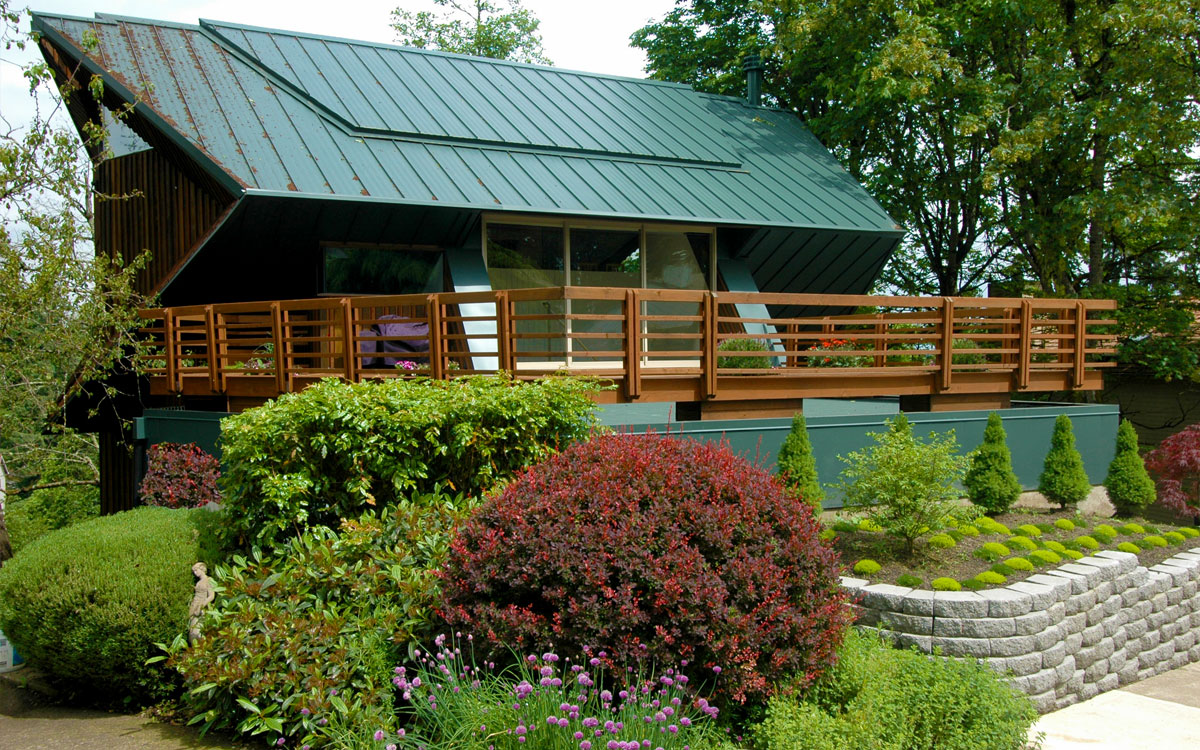 |
||
|
WEISS RESIDENCE West Linn, Oregon - 2004 |
||
|
Located on a sloping site in hills of West Linn, a suburb of Portland, Oregon, the Weiss Residence provides an exclamation mark in the streetscape. It’s strikingly rigid geometric forms and unusual detailing which accentuate its shape make for an intriguing composition. While not being an example of Robert Oshatz’ most elaborate work, it may be his most admirable. Designed for Oshatz’ own daughter and her husband, the Weiss Residence was built as an affordable first home for the couple and their children. Given the restrictive budget; coupled with the steeply falling lot it is astounding that such a unique piece of architecture was achieved. The 179 square meter building is spread over three floors giving the house a vertical emphasis and making the East and West elevations somewhat tower like, yet the building is by no means menacing from the street. The entry to the home is made onto the middle level after descending a short concrete driveway, while the upper floor is almost absorbed as the eaves slope downward to form the diamond shapes that can be seen on the side elevations. The building opens out to a large rectangular deck through sliding doors. The deck is intended to act in the same was as would a traditional porch; helping to merge the lives of the home’s occupants with the rest of the neighborhood, this helps to soften the building from the street. The deck also is used to roof the garage and reduces the scale of the building by extending out toward the sidewalk. At its farthest extremity from the house the deck sits less than two meters above the sidewalk. The facade is further broken down by the planter box, adorned with small shrubs which help to reduce the scale of the building. |
||
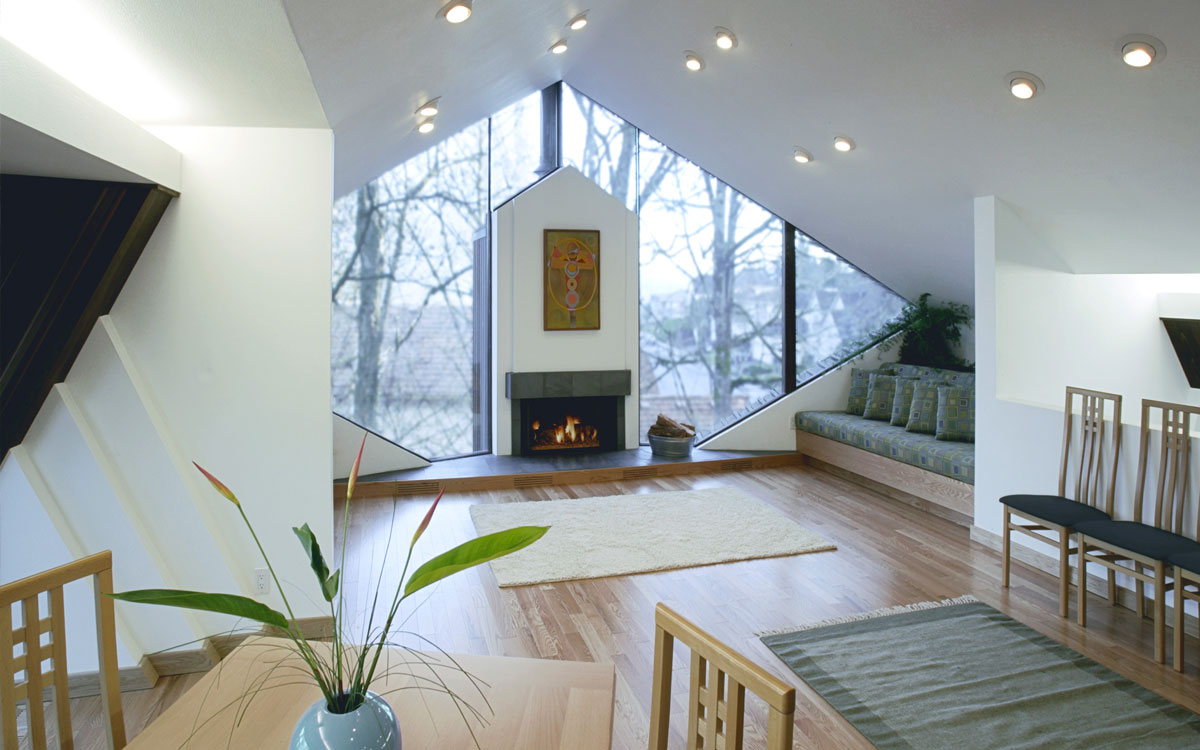 |
||
|
The skin of the house is constructed from outdoor treated lumber, chosen for economy, yet in its utilization provides a beautiful addition to the design. The strips of wood, used with alternating profiles are combined to form a striped elevation that helps to emphasize the forms of the structure. This is used to great success in the articulation of the diamond shape that is formed by the splitting of the eaves from the roofline. The stripes which run vertically up the building and emphasize its tower like form, are then sloped, perpendicular to the edges of the diamond, turned again, and carried through horizontally to the glazing. The fireplace, which seems to grow out of the Eastern elevation, is also accentuated by the striping effect. The metal roofing, which was also chosen for economy is also used to add to the texture of the elevation. When used in conjunction with the wood cladding system the straight folds of the metal roof help to enhance the geometric forms of the structure. The interior of the house is equally as interesting as its exterior. The lower and upper floors are accessed via a stair case with treads cantilevered out from the wall. The stairs are suspended at their extremities by stainless steel cables that run the full height of the three story stair well. They create a vertical emphasis similar to that achieved by the exterior cladding, while the cantilever is reminiscent of the two decks that project out amongst the trees from the lower and upper floors The lower floor is home to an entertainment room, with a bathroom and the cantilevered deck, accessed via sliding glass doors, while the middle floor contains three bedrooms which each exhibit interesting formations in plan that are in turn expressed through the exterior. These two levels are executed with the same precision as could be expected from a skillful architect, but it is the upper floor that provides the most dynamic space in the house |
||
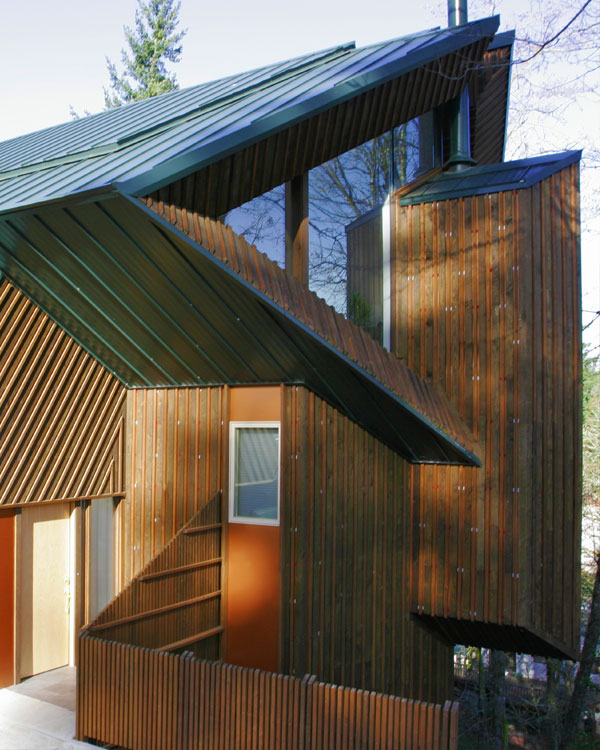 |
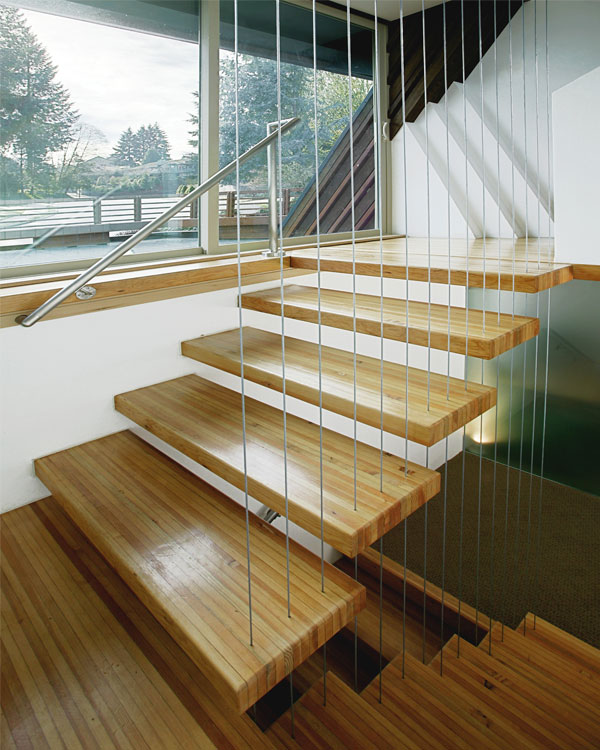 |
|
|
The upper floor sits beneath a raking ceiling that follows the slope of the roof, and is punctuated with an arrangement of swiveling down lights. The diamond form seen on the exterior is carried through the space by means of the raked ceilings, and white scalloped details which grow out of the floor and collide with the exterior cladding which is brought through the openings perpendicular to the room’s main axis. The fireplace provides the room’s main emphasis. Standing freely amongst an expansive glass window the fireplace is finished in the same white as the rest of the room yet is isolated by glass and oak floor boards. It respectfully reflects the angle of the ceiling but ultimately remains a distinct element in its own right. At the opposite end of the room a neat kitchen is lit by a clerestory window which takes up the diamond form. The middle of the room is broken by a sliding door that opens out to a cantilevered deck which soars out amongst the tree tops giving a magical view of the Oregon landscape. The Weiss Residence is an inspiring example of design in its own right, especially given the physical restraints of a sloping block, but the fact that it was built as an affordable home makes it even more astounding. The innovative building systems that were chosen for economy are in fact turned into architectural assets. The cladding and roofing combine to emphasis the form of the building, while the interior details bring the whole building together into one unified composition. Robert Oshatz has in this house addressed a difficult brief in such an inventive way that the Weiss Residence feels nothing like affordable housing. It feels like what it is; a skillful and well considered piece of architectural design. |
||
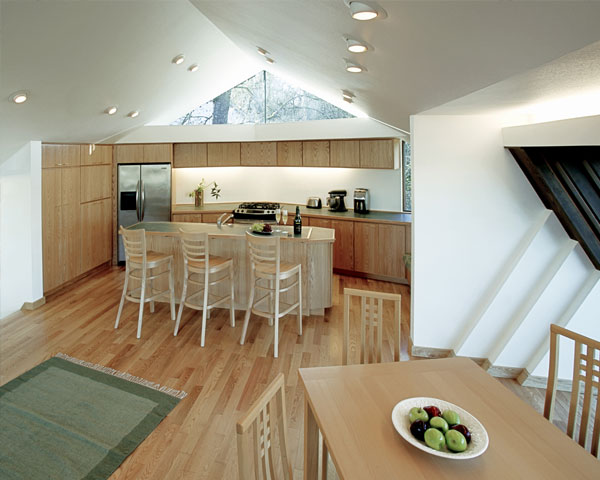 |
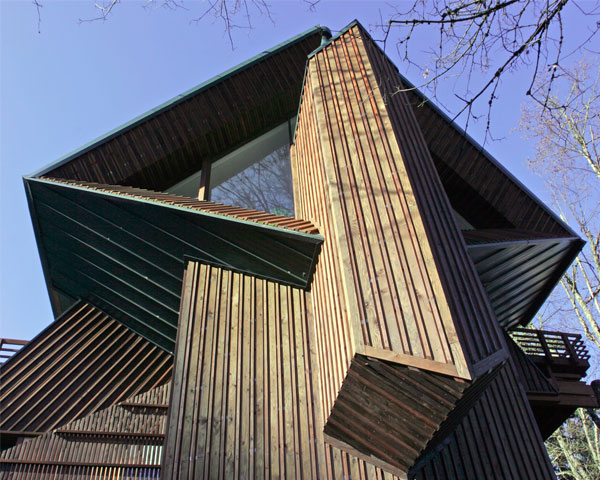 |
|